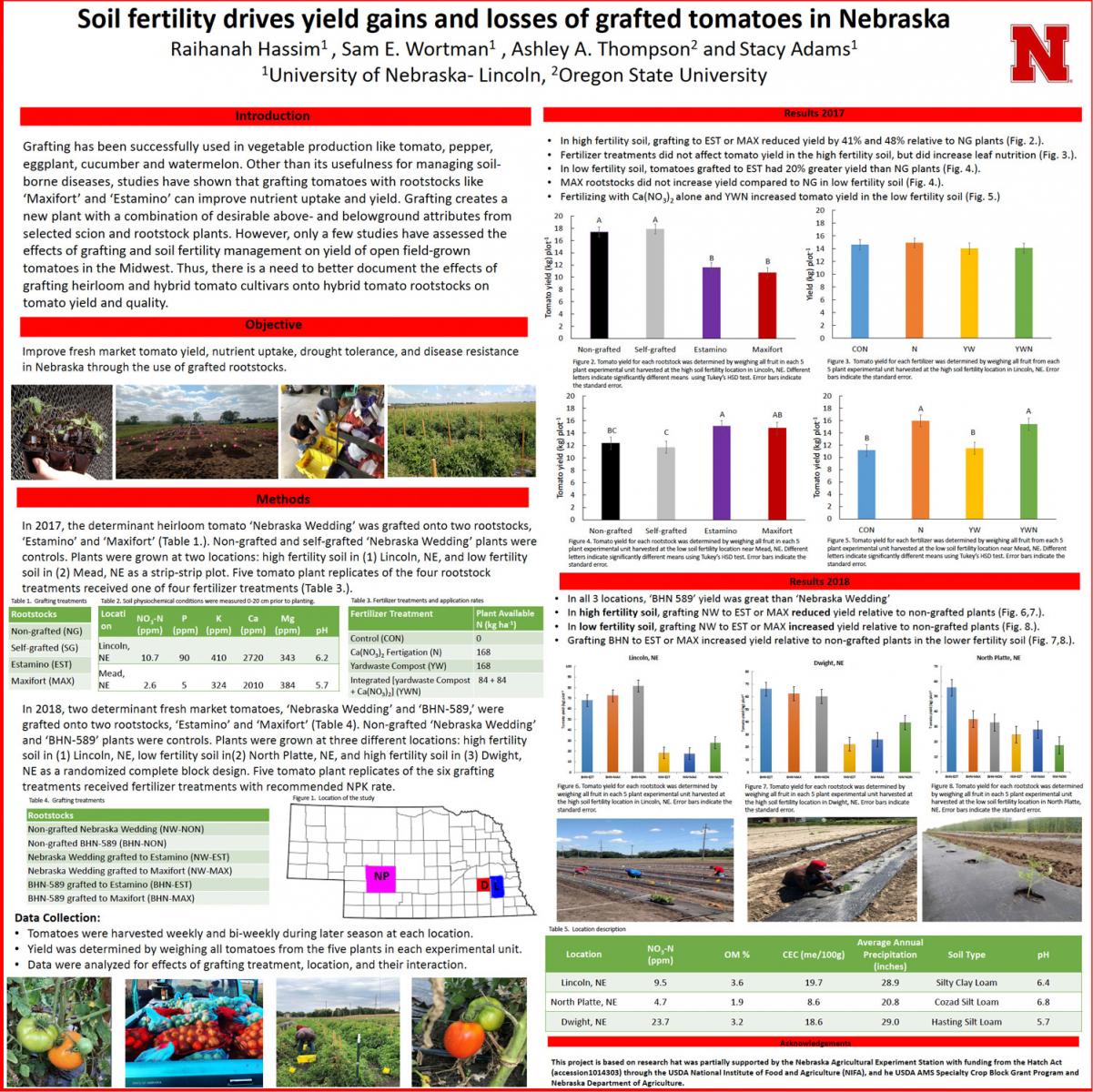Blossom end rot on tomato fruit is a common physiological response to plant calcium deficiency. Early symptoms include small, water soaked spots that eventually become larger, black, and leathery – affected tomato fruit is not marketable. Blossom end rot is more common when soil moisture is limiting, and resulting tomato yield loss can approach 70% due to the compounding effects of drought stress and blossom end rot. Current recommendations suggest adequate irrigation to prevent blossom end rot in Nebraska, but there may be opportunities to use compost fertilizers and grafted rootstocks to improve water use efficiency and calcium nutrition. Compost can increase soil moisture retention, which may improve mass flow of calcium to plants. Moreover, organic nitrogen from compost is slowly mineralized throughout the season, which may reduce competition with calcium for plant uptake. Grafting high-value heirloom tomato cultivars with hybrid rootstocks can potentially improve calcium and water use efficiency, which may lead to decreased blossom end rot and increased fruit yield and quality.

Funding sources: Nebraska Department of Agriculture Specialty Crop Block Grant Program

